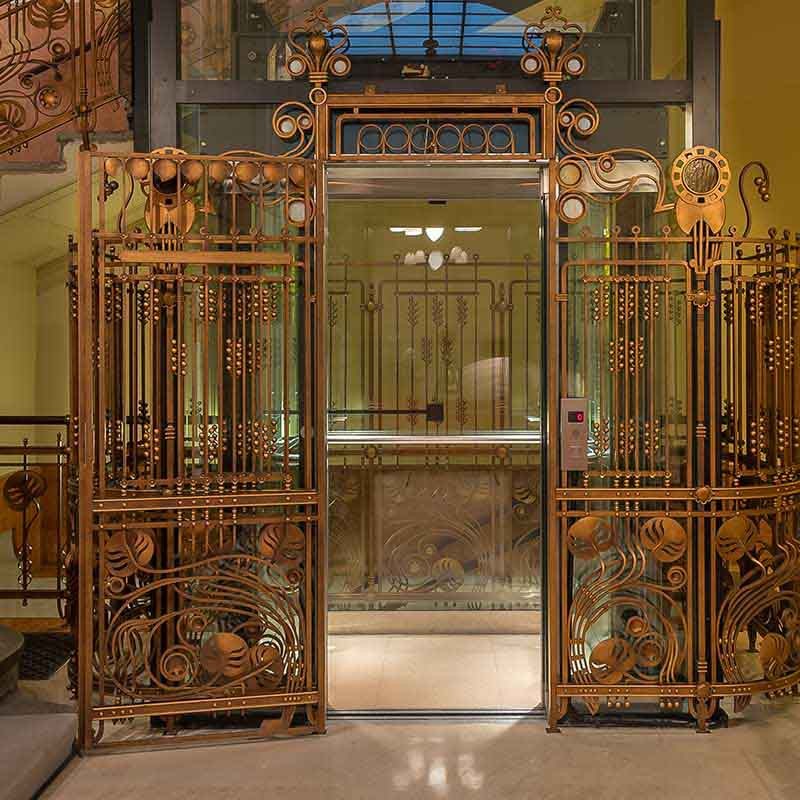What is Art Nouveau?
Art Nouveau is an ornamental style of art that is inspired by natural life and characterized by its use of a long, sinuous, whiplike, and organic line. It usually takes the form of flower stalks and buds, vine tendrils, or insect wings. Art Nouveau can be applied most often in architecture, interior design, jewelry and glass design, posters, and illustration.
What are other names of Art Nouveau?
Art Nouveau was called various names in different places, such as Jugendstil in Germany, Sezessionstil in Austria, Stile Floreale (or Stile Liberty) in Italy, and Modernismo (or Modernista) in Spain.
Who are the key figures?
Among the prominent figures of Art Nouveau are the Scottish architect and designer Charles Rennie Mackintosh; the Belgian architects Henry van de Velde and Victor Horta; the French architect Hector Guimard; the founder of the Vienna Secession art movement, Gustav Klimt; the American glassmaker Louis Comfort Tiffany; the French furniture and ironwork designer Louis Majorelle; the Czechoslovakian graphic designer-artist Alphonse Mucha; the French glass and jewelry designer René Lalique; the American architect Louis Henry Sullivan; the Spanish architect, and sculptor Antonio Gaudí.
When Art Nouveau begin?
At first, the term Art Nouveau appeared in the Belgian journal L’Art Moderne, in the 1880s. This term is used to call the artwork of the artist group Les Vingt–twenty painters and sculptors who seeking reform through art. Art Nouveau flourished between the 1890s until before World War I. It emerged from the movement of design reform. This movement was a reaction to art education at that moment, industrialized mass production, and degradation of historic styles. Art Nouveau balanced both tendencies between applied art and the credo of “art for art’s sake”. It synthesized craft and art.
What the philosophy behind the Art Nouveau?
Art Nouveau is an art experimentation of imagination that is inspired by the vitality of natural life. It can be seen as a reaction to positivism and scientism that see the world as a machine that can be calculated and predicted. Art Nouveau also can be regarded as the synthesize between high art style and the potential character of capitalism in art. The unique and classy style of Art Nouveau represents its high art tendency. However, its power to spread internationally, to become a common art style, and to attract mass public attention are important characters of the blend between art and capitalism.
Where can we still find Art Nouveau architecture today?
Over 100 years, several Art Nouveau buildings have been demolished. The Maison du Peuple in Brussels that was designed by Victor Horta, was demolished in 1965. The Parisian concert hall by French architect–Hector Guimard was pulled down in 1905. Only three of its roofed entrances remain. Today, some of Art Nouveau buildings still stand, among them can be found in these cities:
1. Prague

Elevator in Central Hotel, Prague, Photo: https://www.kkhotels.com
The Hotel Central was one of Prague’s Art Nouveau buildings. Up to now, it is still open for business.
2. Budapest
The Postal Savings Bank, Budapest, Photo: https://budapestflow.com
Budapest has many Art Nouveau architectural buildings, like Post Office Savings Bank, Lechner’s Institute of Geology, the Török bank and school on Dob Utca, and Hotel Gresham Palace. Budapest also has an Art Nouveau museum or is known as Magyar Szecesszió Háza.
3. Glasgow
The Willow Tea Rooms, Glasgow, Photo: https://www.willowtearooms.co.uk
Art Nouveau style in Glasgow can be found in the Willow Tearooms in Sauchiehall Street.
4. Turin
Fiat Factory in Turin, Photo: http://www.art-nouveau-around-the-world.org
In Turin, find the Stile Liberty in the first Fiat factory on Corso Dante and the Borgo Pô.
5. Brussels
Staircase in the Hôtel Tassel, Brussels, Photo: https://www.britannica.com
Brussels preserves the legacy of Art Nouveau that can be seen in Horta’s Hôtel Tassel, the Hôtel Solvay, La Maison Cauchie, Square Ambiorix, the Hôtel Van Eetvelde, and the Horta Museum.
World Art Nouveau Day, 2020

